Affiliate links on Android Authority may earn us a commission. Learn more.
Apple announces iPhone X, 8, and 8 Plus -- what you should know about Android's biggest competition
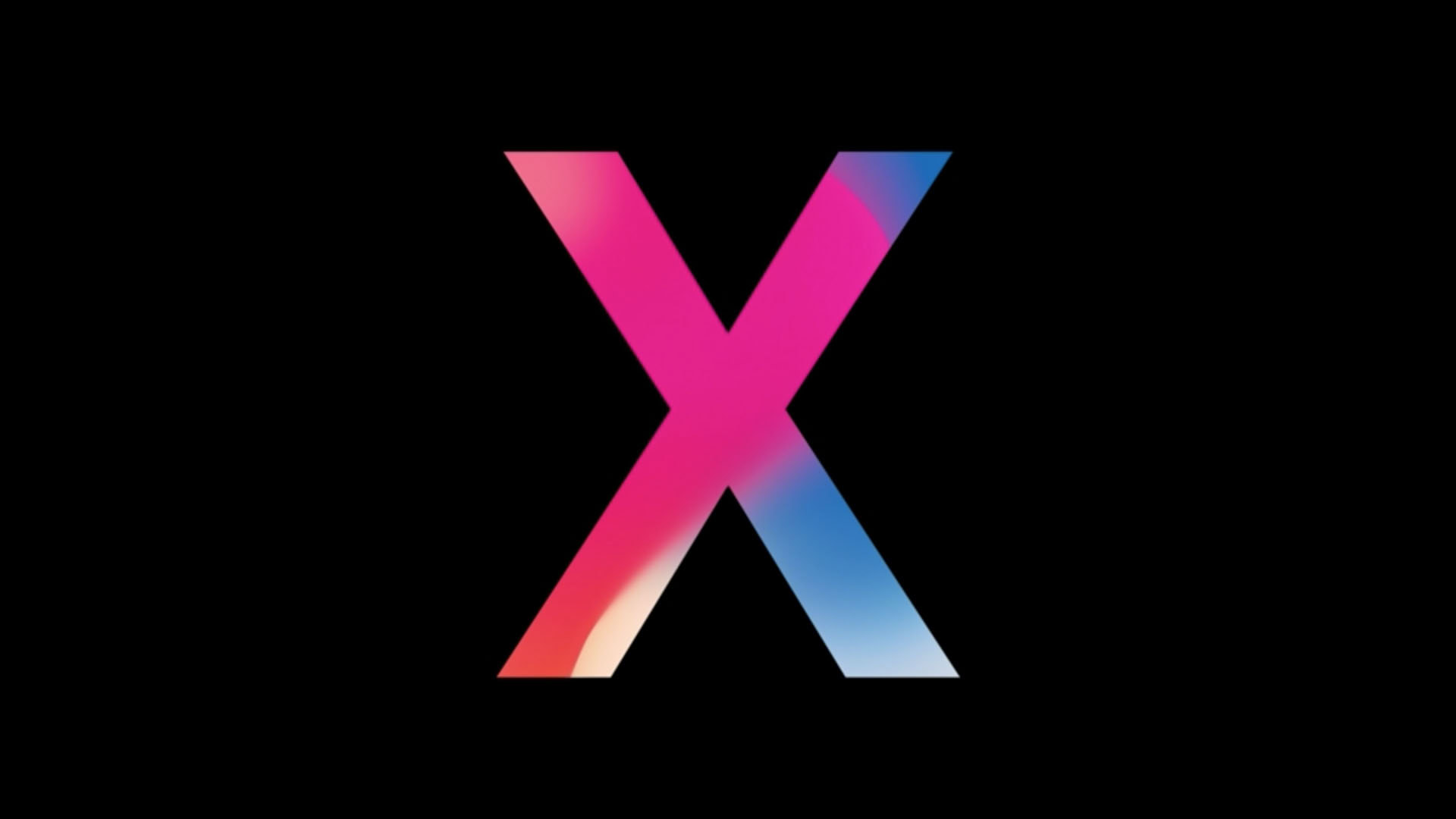
This is a big year for Apple. It’s been 10 years since the launch of the very first iPhone, so of course the Cupertino-based company is doing something big to celebrate. Today the company has revealed its new flagship devices for 2017, the iPhone 8, iPhone 8 Plus, and, most interestingly, the anniversary edition iPhone X.
As an Android-focused website, it’s not only our duty to bring you the latest and greatest Android coverage, we also need to take a look at what Android’s biggest competitors are bringing to the table. So with that in mind, let’s talk about Apple’s new devices.
iPhone 8 and 8 Plus – the iterative upgrades
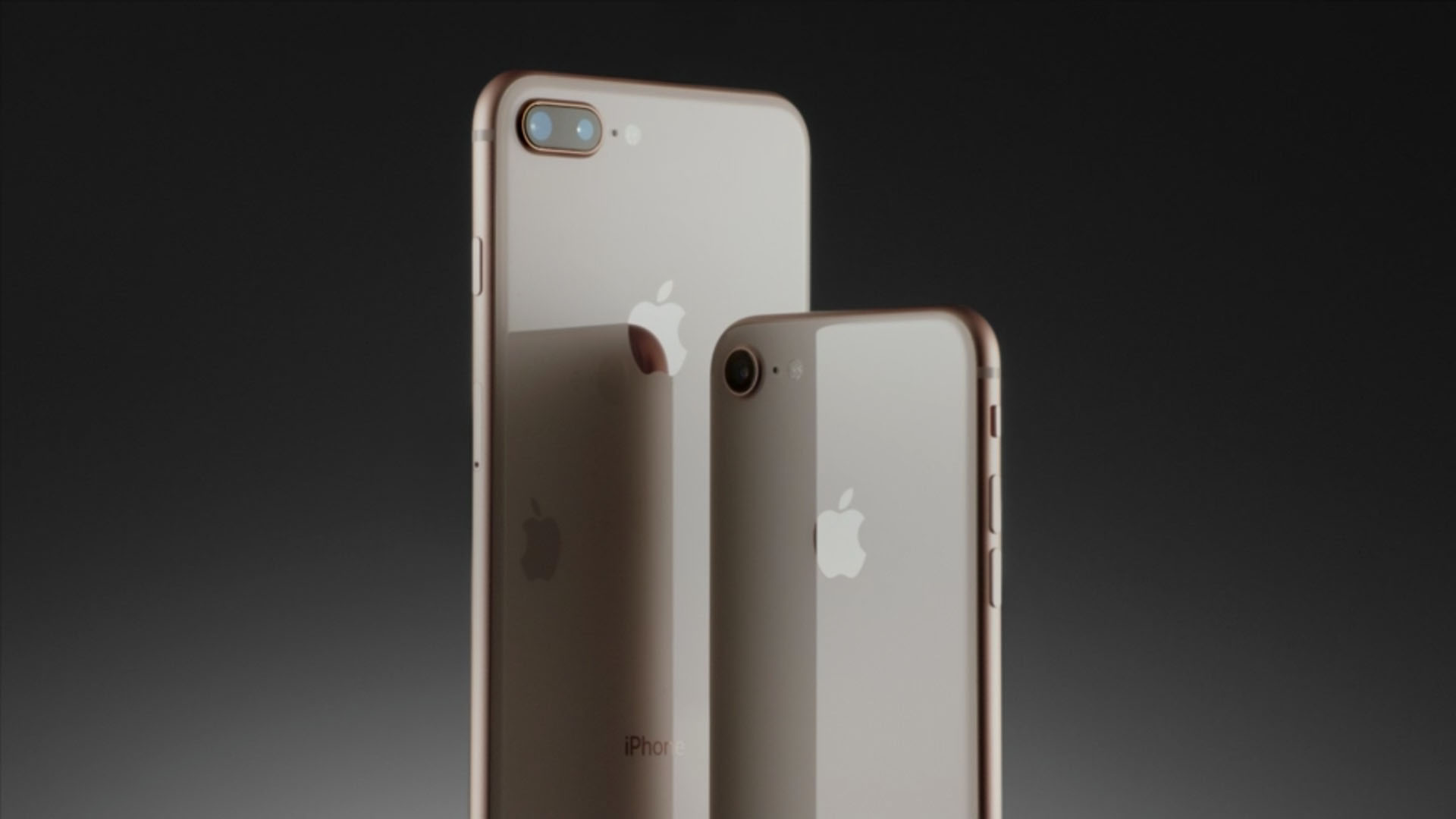
For the folks who are more interested in an iterative upgrade over last year’s iPhone 7 and 7 Plus, Apple today introduced the iPhone 8 and 8 Plus. The company isn’t going for the more iterative ‘s’ upgrade this year, and that’s for good reason. The iPhone 8 and 8 Plus sport a refined design and upgraded specs over last year’s devices.
For starters, while the devices look similar to the 7 and 7 Plus, they now feature glass on the front and back, complete with an aerospace-grade aluminum frame. Apple actually claims the glass on these new iPhones is the “most durable glass ever in a smartphone”.
On the front, the iPhone 8 and 8 Plus sport 4.7-inch and 5.5-inch displays respectively, along with the company’s new Retina HD display technology.
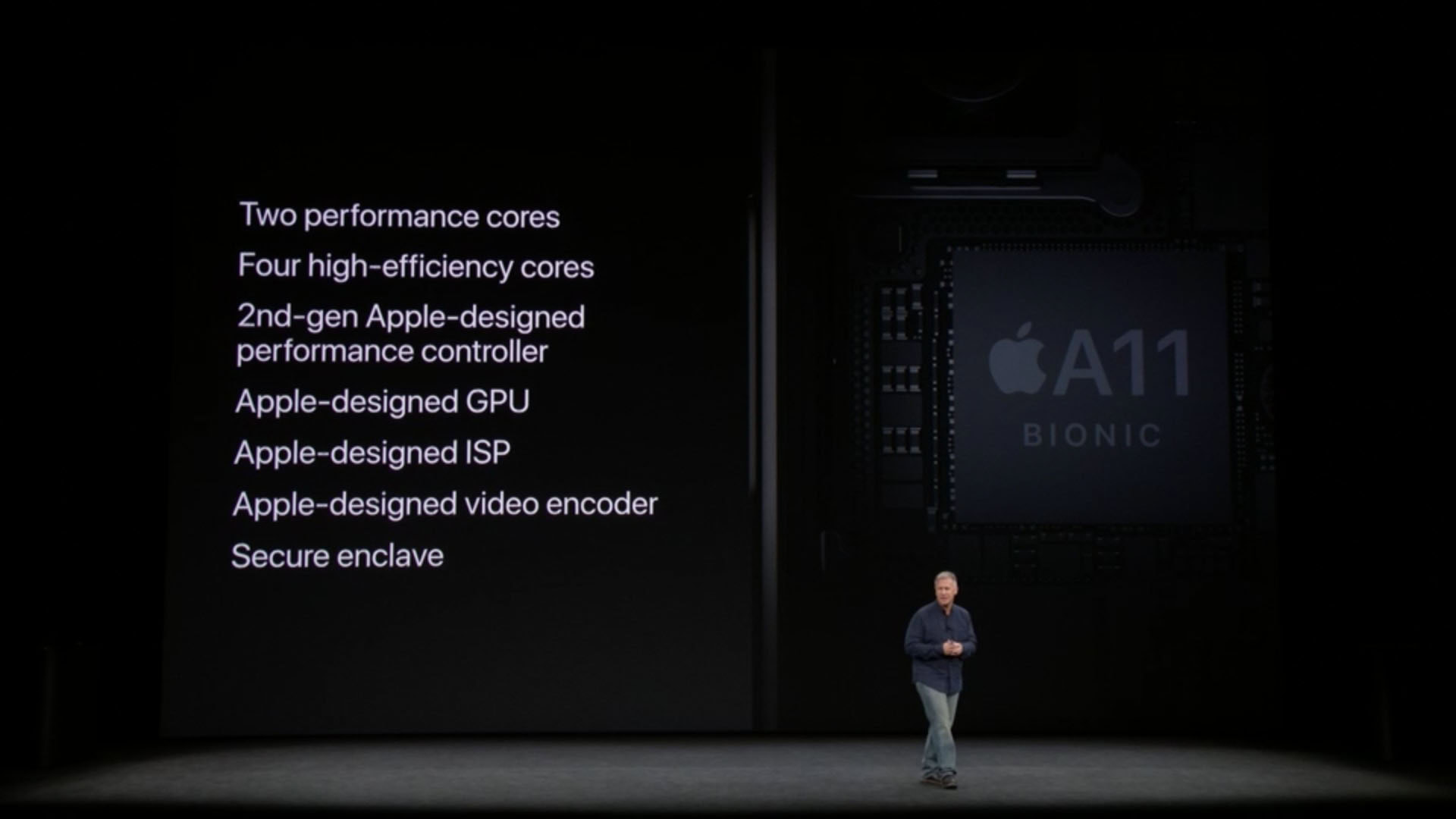
Both the 8 and 8 Plus come with Apple’s new A11 Bionic chipset, which features a 64-bit six-core CPU (four high-efficiency cores/two performance cores), as well as an Apple-designed GPU that’s supposedly 30 percent faster than the A10.
Around back, the iPhone 8 sports a new 12 MP sensor, complete with a new color filter and OIS, while the 8 Plus comes with dual 12 MP sensors with apertures of f/1.8 and f/2.4. Apple is also introducing a new Portrait Lighting feature, which allows you to change the lighting of your face in Portrait Mode, even before you take the photo. In addition, the new iPhone 8 phones support slow motion 1080 video recording at 240 fps.
A few more tidbits — the devices support LTE Advanced, Bluetooth 5.0, stereo speakers that are around 25 percent louder than the iPhone 7, as well as support for the Qi wireless charging standard.
Pre-orders for the iPhone 8 and 8 Plus begin on September 15 with the device going on sale September 22. Color options include Silver, Space Gray, and Gold, and this time around Apple is ditching the 32 GB storage option, instead opting for 64 and 256 GB models. Pricing for the iPhone 8 starts at $699, while the 8 Plus starts at $799.
iPhone X – the anniversary model
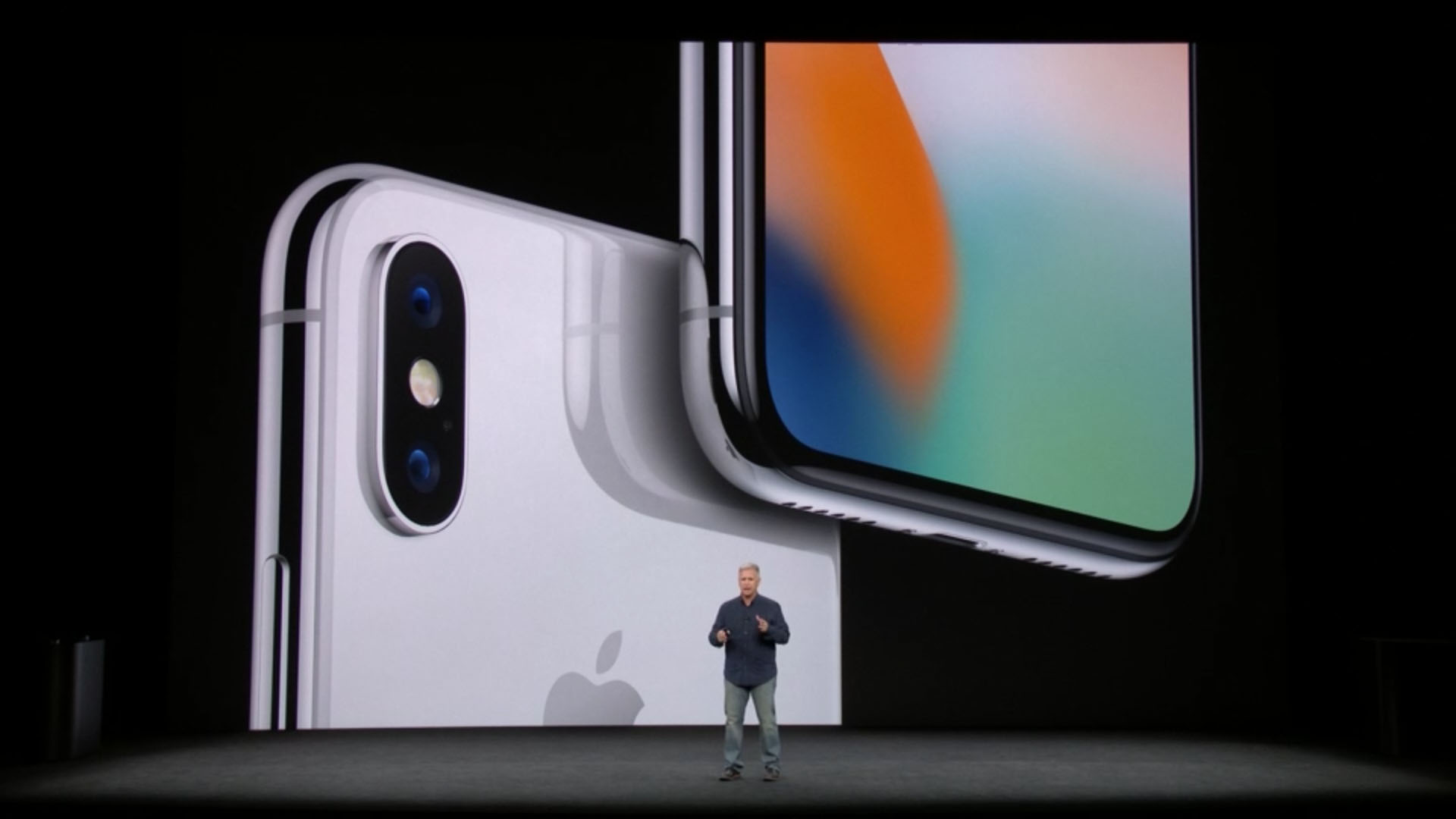
The biggest news of the day is the introduction of the new iPhone X, Apple’s most impressive – and most expensive – iPhone to date.
It comes with a 5.8-inch edge-to-edge OLED Super Retina display with a resolution of 2438 x 1125 and a pixel density of 458 ppi. The display also supports HDR10 and Dolby Vision.
You’ve probably noticed Apple has done away with the home button. This is pretty interesting for a few reasons — not only has every iPhone come with a physical home button for navigation purposes, the home button is also where Touch ID (Apple’s fingerprint sensor tech) lives.
Apple seems to have come up with a few solutions for these problems. With the iPhone X, you can just swipe up from the bottom of any screen to go home. Swiping up and holding will get you to multitasking, and you can even swipe along the bottom of the screen to quickly switch between apps. What’s more, Control Center has now been moved to the top of the screen, just like Android’s quick settings implementation.
In terms of biometric security, Apple also introduced Face ID, which is a fancy name for the facial recognition tech that will launch with the new iPhone. The iPhone X utilizes a new front-facing TrueDepth camera system, which will process your face scan on-device. Face ID is apparently much more secure than Touch ID, and will be compatible with Apple Pay and third-party applications.
Speaking of cameras, the iPhone X sports a dual 12 MP setup on the back with new color filters, a quad-LED two-tone flash, and OIS in both lenses, just like the Note 8. The 12 MP wide-angle sensor sports an f/1.8 aperture, while the telephoto lens comes with an f/2.4 aperture.
The iPhone X comes with the aforementioned Portrait Lighting mode, as well as the ability to take Portrait Mode selfies.

Because this new device also comes with glass on the front and back, it’s also compatible with Qi wireless charging. Apple is releasing a new charging dock called the AirPower that will allow you to wirelessly charge your iPhone X, Apple Watch Series 3, and AirPods via the new wireless charging case. The AirPower pad will launch next year.
Of course, this is going to be the pricier model. The iPhone X comes in Space Gray and Silver colors in 64 and 256 GB storage options, with prices starting at $999. It’ll go up for pre-order on October 27 and will be available for purchase on November 3.

Apple Watch Series 3 – Apple’s first cellular smartwatch
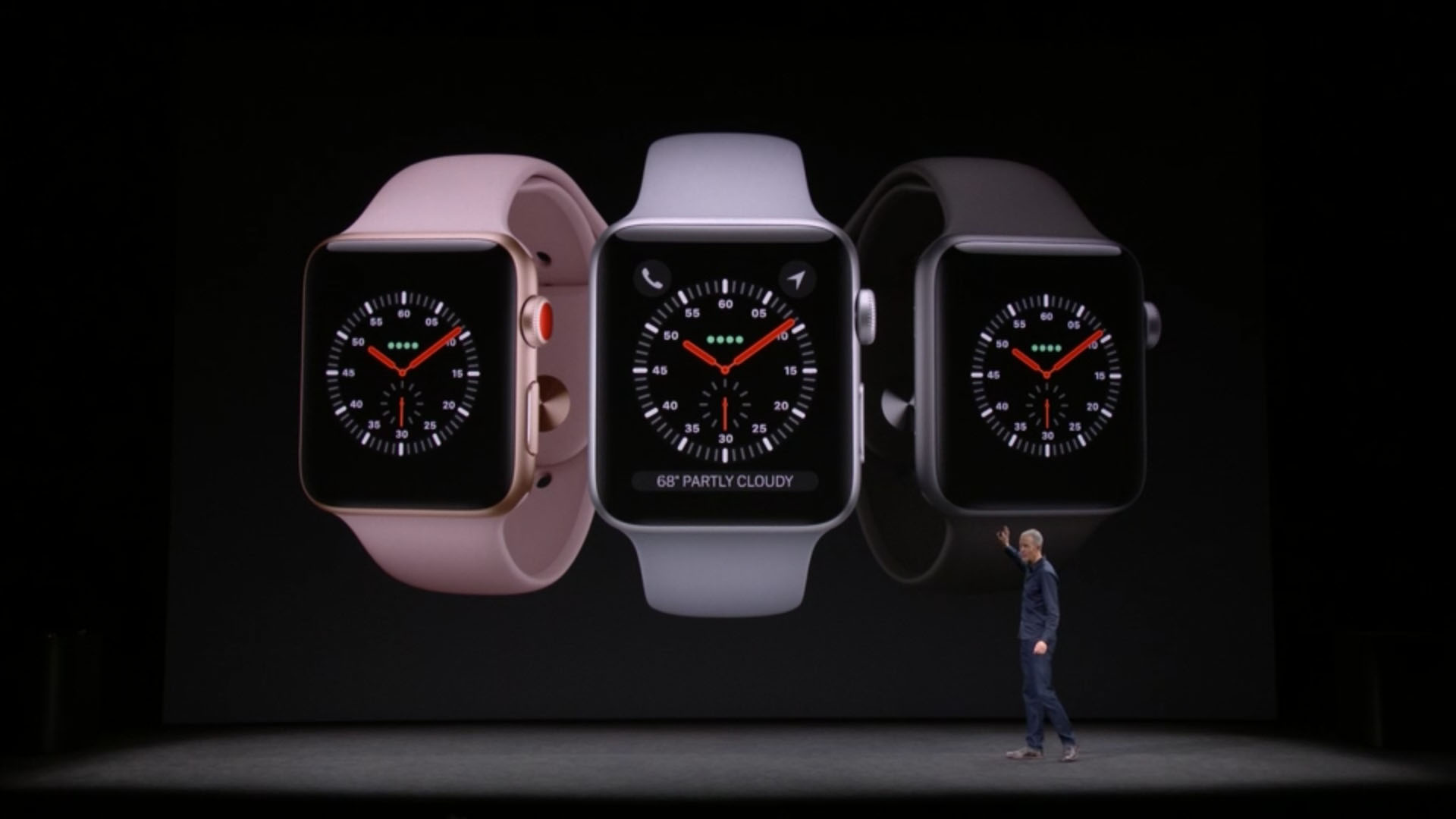
After dropping the bomb that the Apple Watch is now the number one most popular watch in the world, the company announced a brand new model — Apple Watch Series 3.
The Watch Series 3 comes with watchOS 4 on board, which brings a number of fitness improvements to the device. Resting heart rate data will now be displayed on the Watch’s face, and it’ll even notify you if it senses you have an elevated heart rate when you’re not active.
As for the new Watch’s design, it unsurprisingly looks a lot like Apple’s Series 1 and 2 watches. In fact, the company says it’s only .25 mm bigger than the Apple Watch Series 2 despite it now including cellular connectivity and a barometric altimeter. Under the hood, the wearable comes with a new dual-core processor that Apple says is 70 percent faster than previous models and 50 percent more power efficient. Siri can now talk back to you on the Apple Watch, which is something it wasn’t previously able to do.
Of course, the big news here is the addition of LTE connectivity. This allows users to navigate via Apple Maps, make and receive phone calls, and even stream music via Apple Music.
The new Apple Watch will be available for purchase on September 15 with availability starting on September 22, while watchOS 4 will roll out to all users on September 19. As for pricing, the cellular-connected watch will start at $399, with the non-cellular version starting at $329.
Thoughts on the new Apple products? Let us know in the comments.